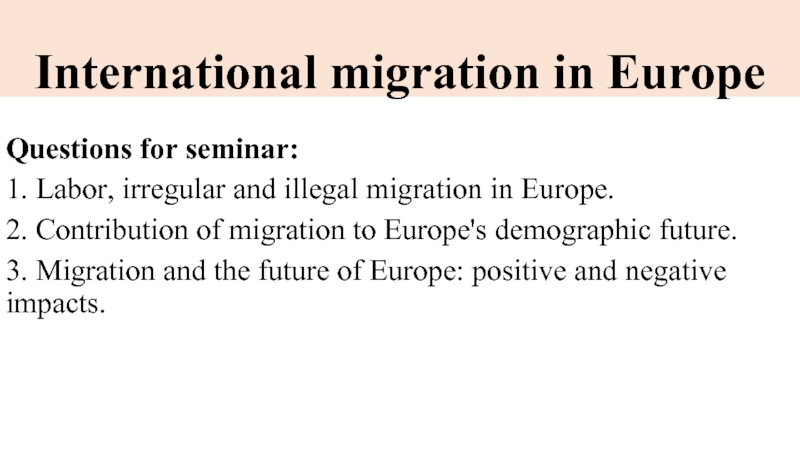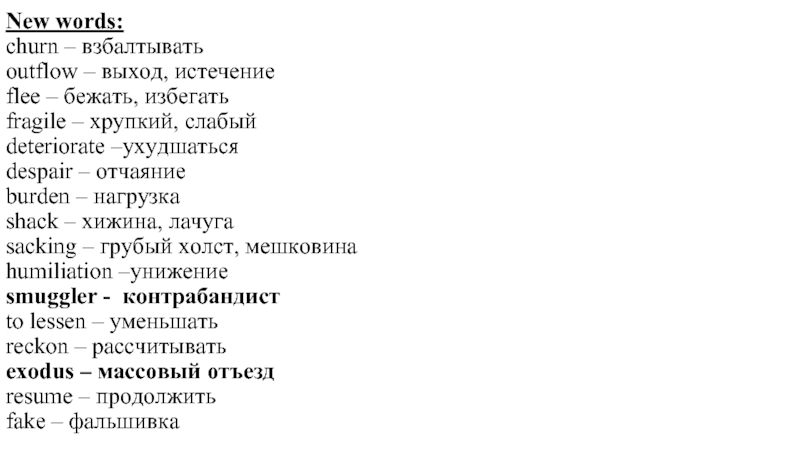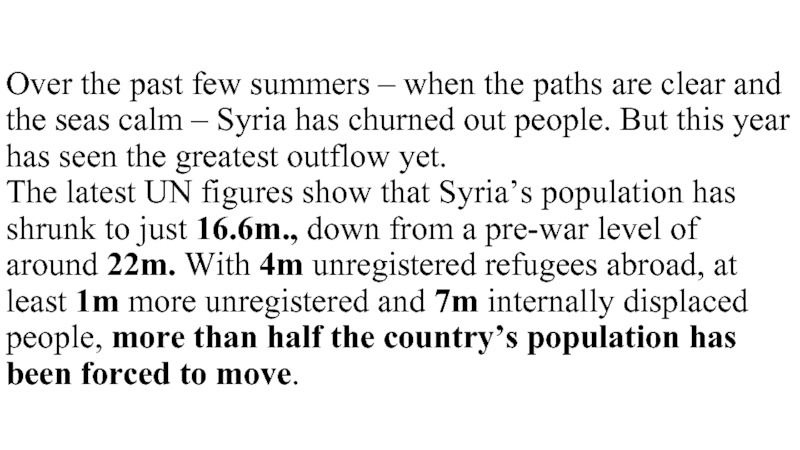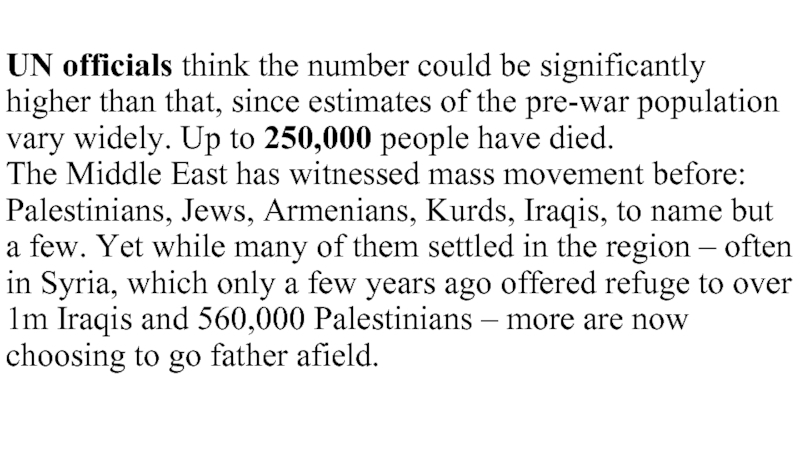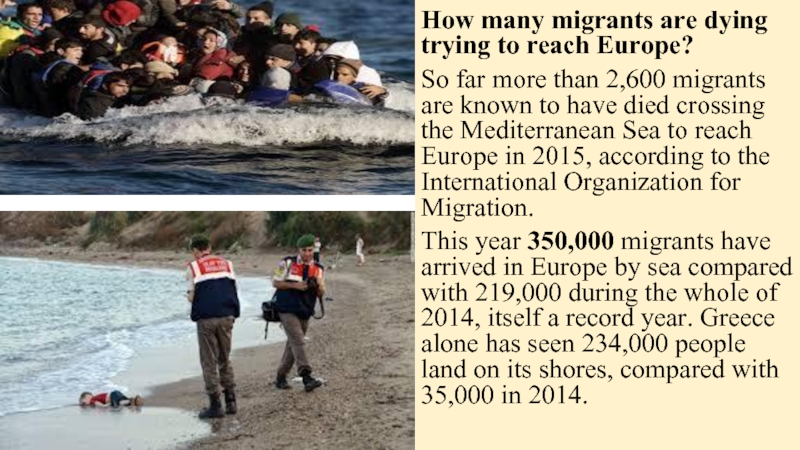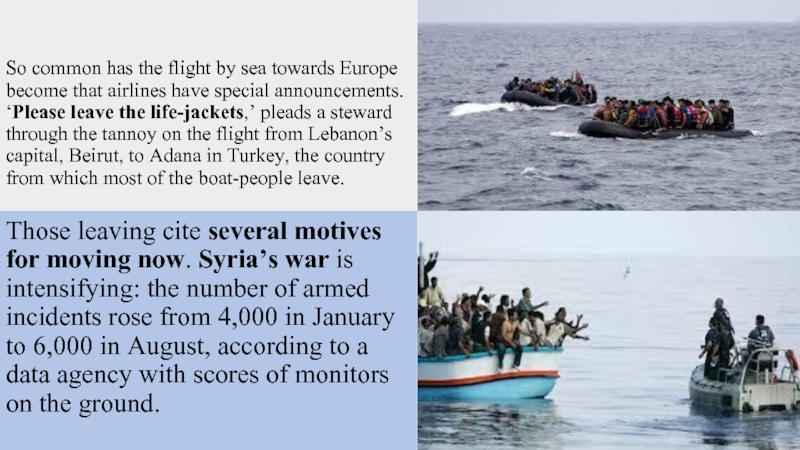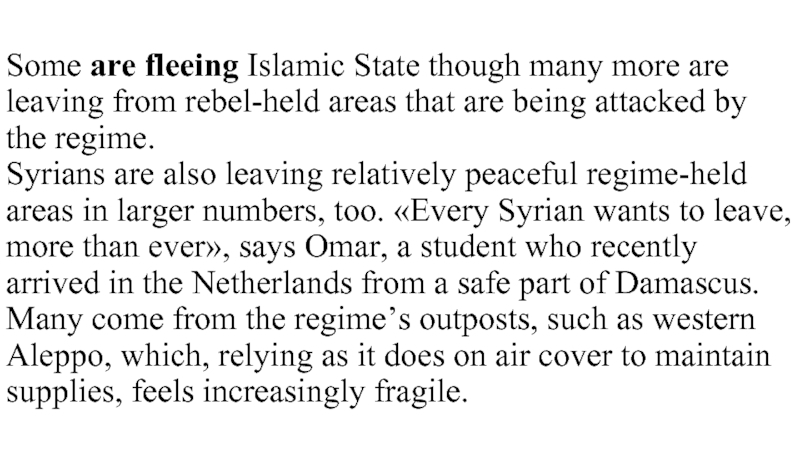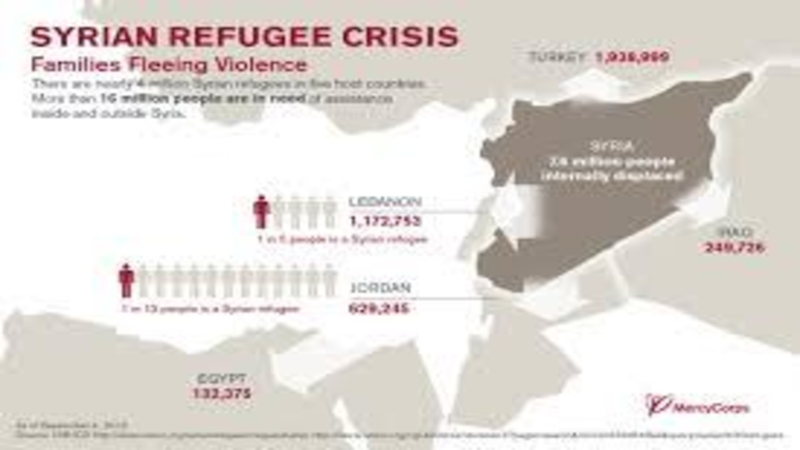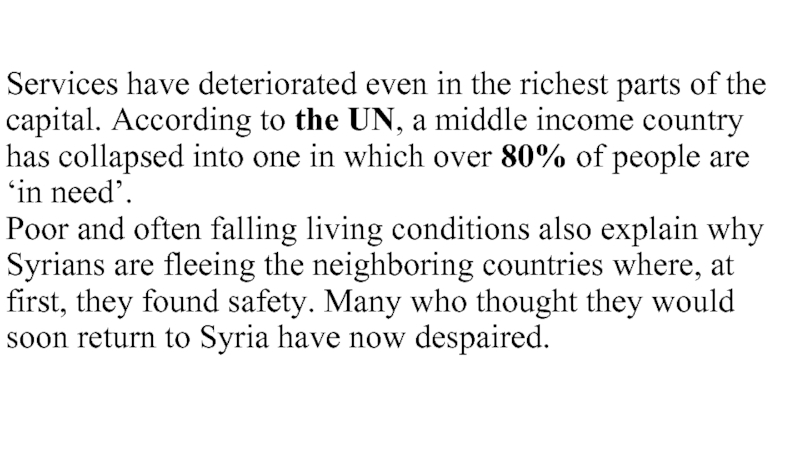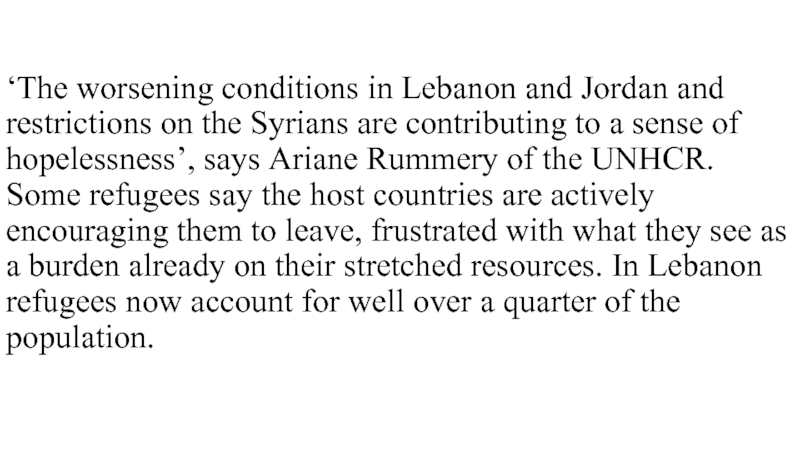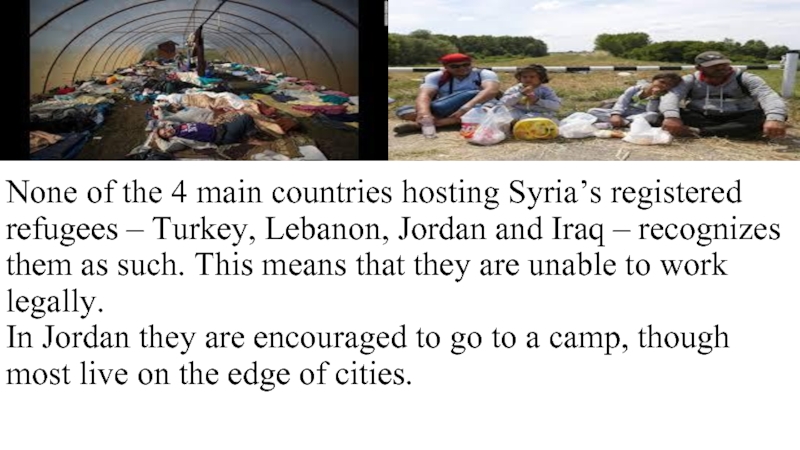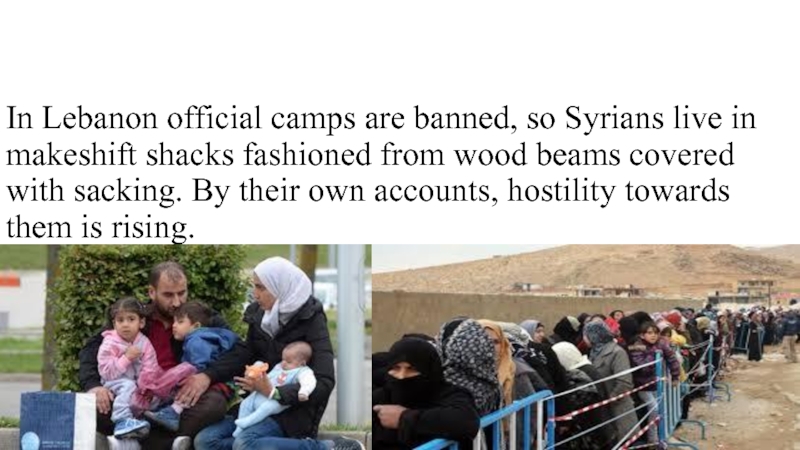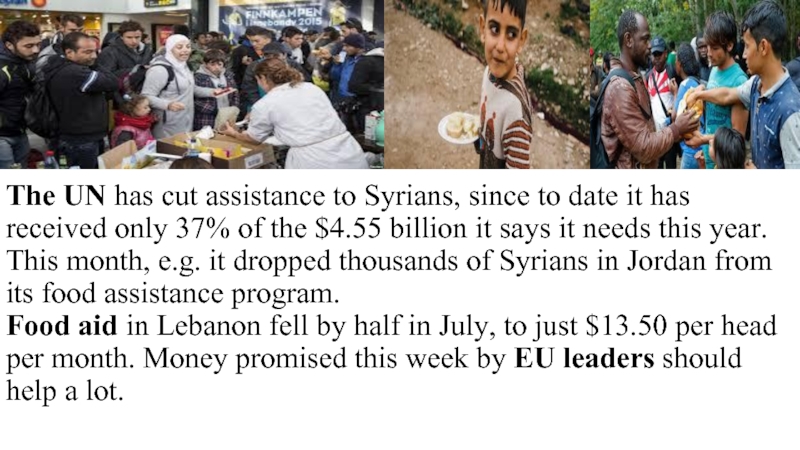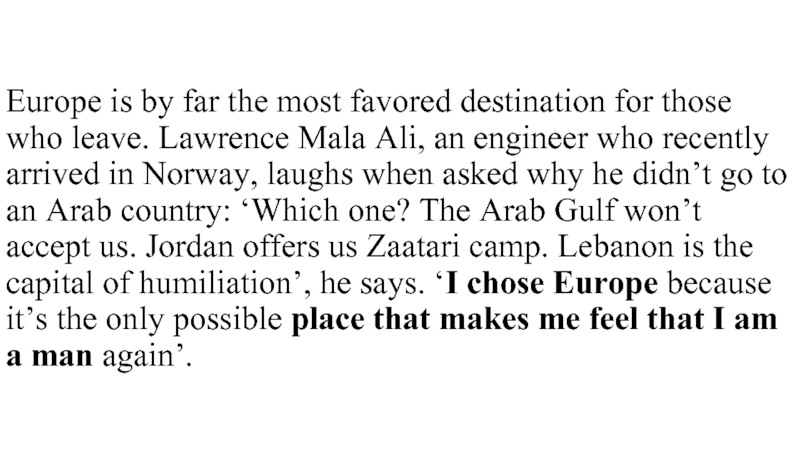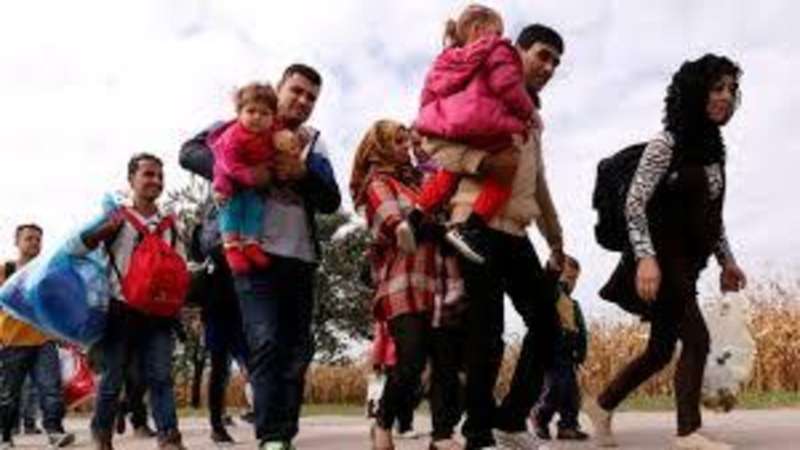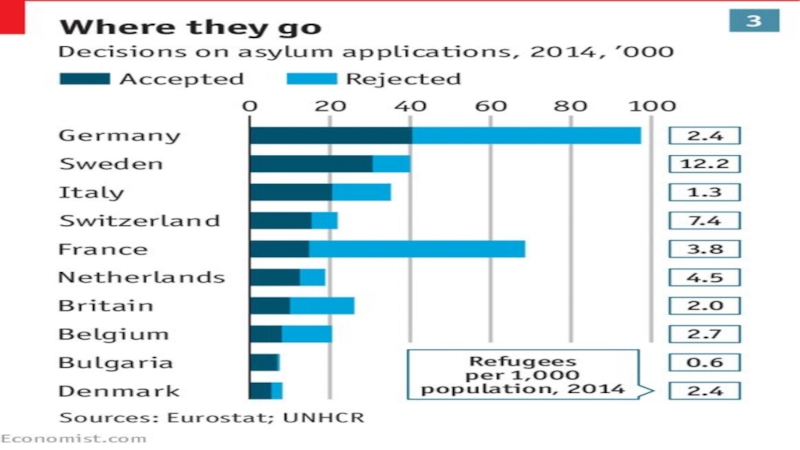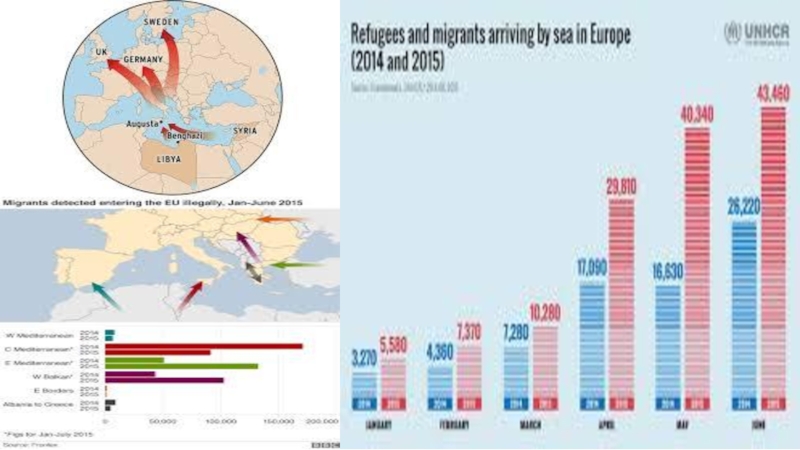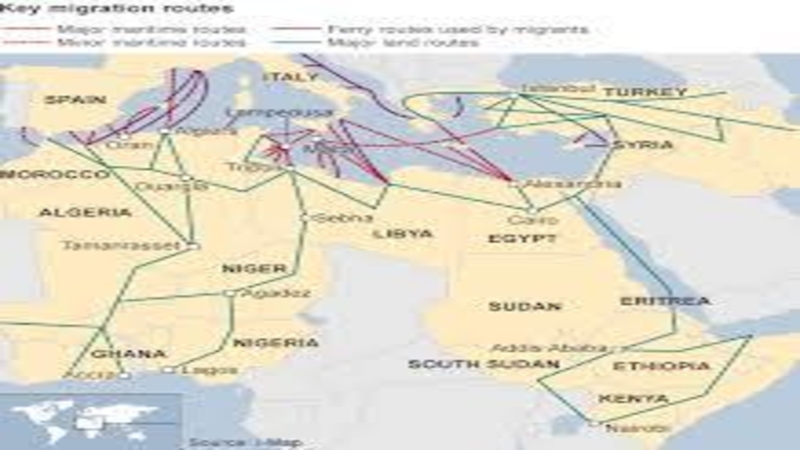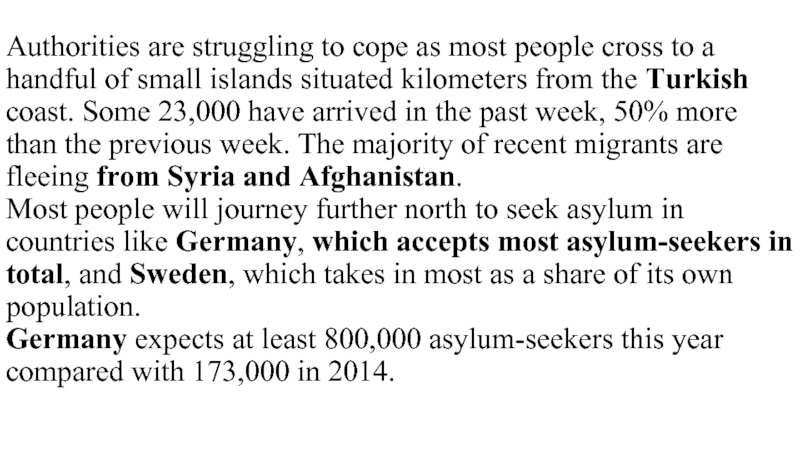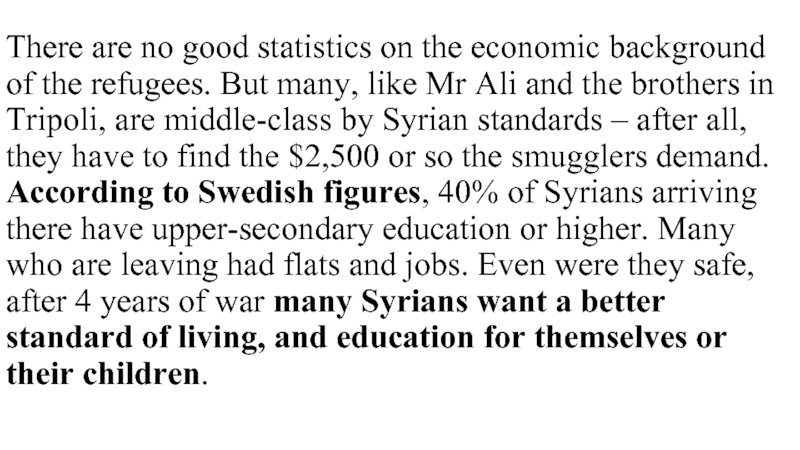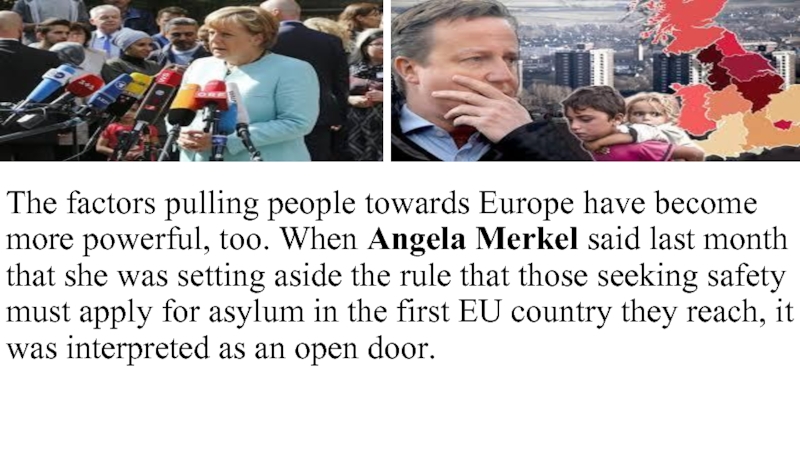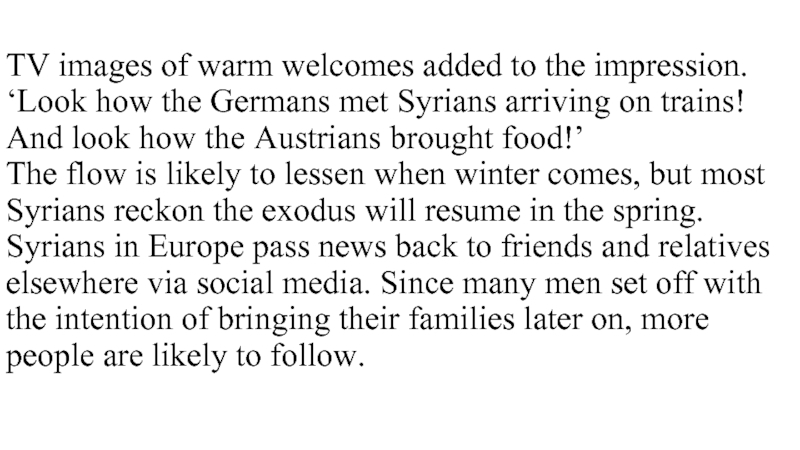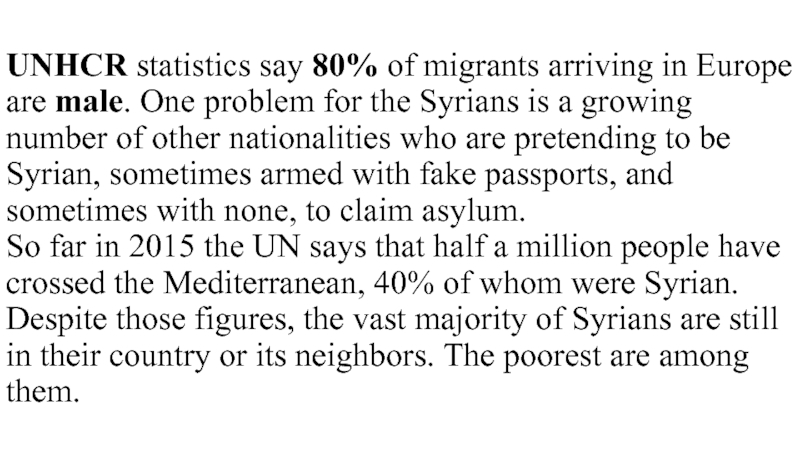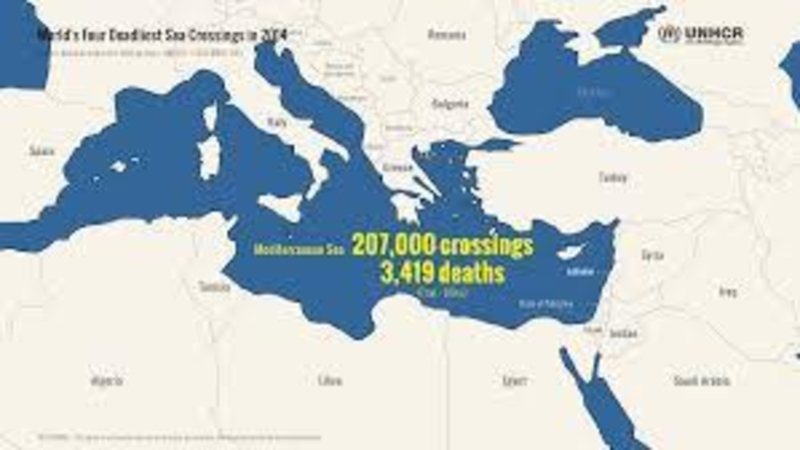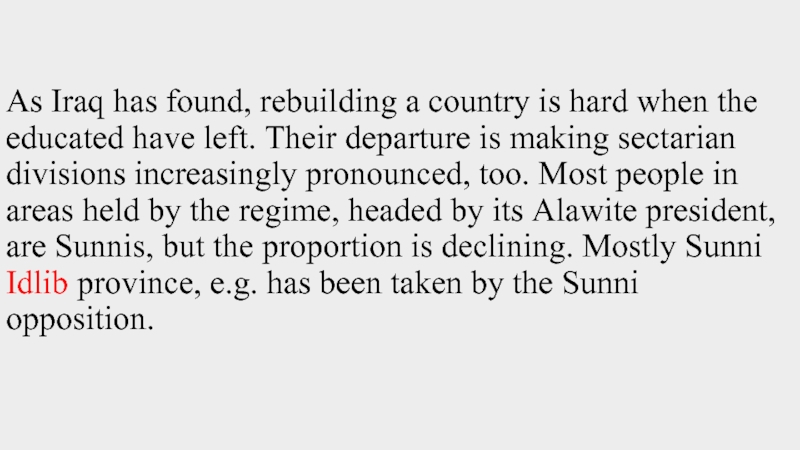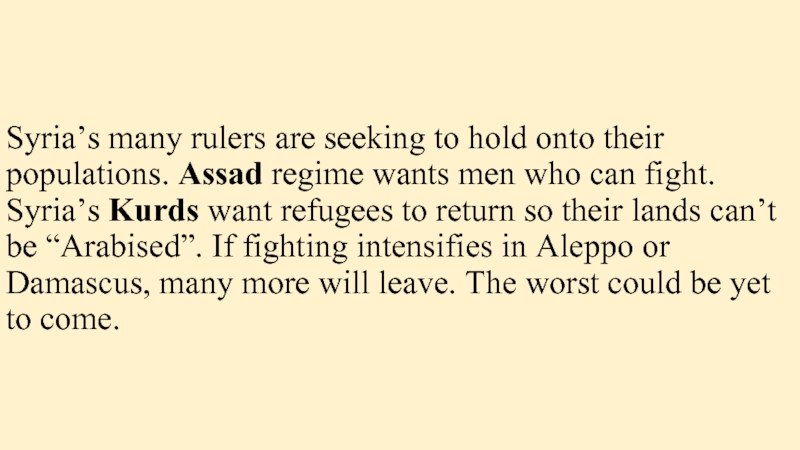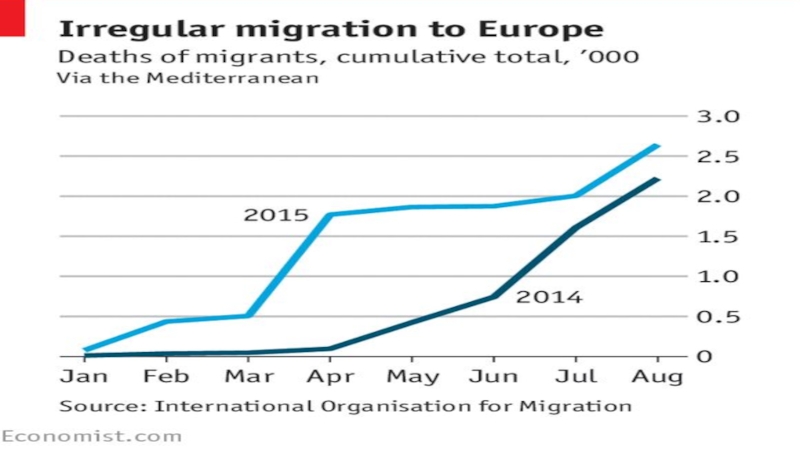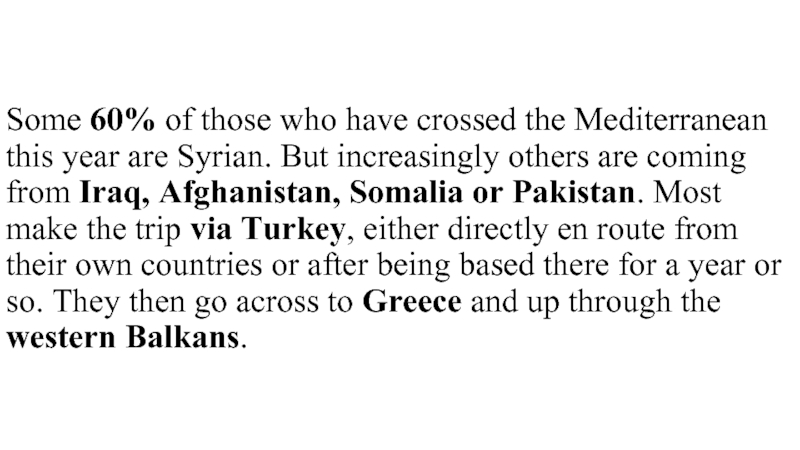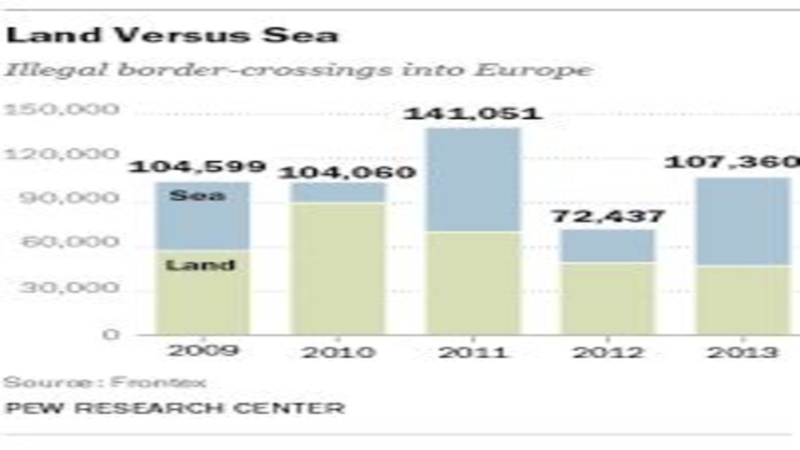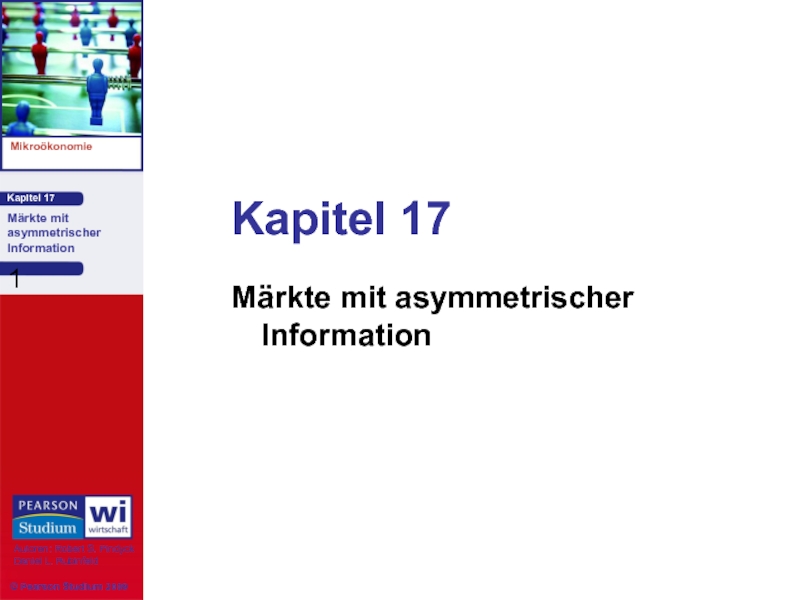Слайд 1International migration in Europe
Questions for seminar:
1. Labor, irregular and illegal migration
in Europe.
2. Contribution of migration to Europe's demographic future.
3. Migration and the future of Europe: positive and negative impacts.
Слайд 2
New words:
churn – взбалтывать
outflow – выход, истечение
flee – бежать, избегать
fragile –
хрупкий, слабый
deteriorate –ухудшаться
despair – отчаяние
burden – нагрузка
shack – хижина, лачуга
sacking – грубый холст, мешковина
humiliation –унижение
smuggler - контрабандист
to lessen – уменьшать
reckon – рассчитывать
exodus – массовый отъезд
resume – продолжить
fake – фальшивка
Слайд 3Over the past few summers – when the paths are clear
and the seas calm – Syria has churned out people. But this year has seen the greatest outflow yet.
The latest UN figures show that Syria’s population has shrunk to just 16.6m., down from a pre-war level of around 22m. With 4m unregistered refugees abroad, at least 1m more unregistered and 7m internally displaced people, more than half the country’s population has been forced to move.
Слайд 4UN officials think the number could be significantly higher than that,
since estimates of the pre-war population vary widely. Up to 250,000 people have died.
The Middle East has witnessed mass movement before: Palestinians, Jews, Armenians, Kurds, Iraqis, to name but a few. Yet while many of them settled in the region – often in Syria, which only a few years ago offered refuge to over 1m Iraqis and 560,000 Palestinians – more are now choosing to go father afield.
Слайд 5
How many migrants are dying trying to reach Europe?
So far more than 2,600
migrants are known to have died crossing the Mediterranean Sea to reach Europe in 2015, according to the International Organization for Migration.
This year 350,000 migrants have arrived in Europe by sea compared with 219,000 during the whole of 2014, itself a record year. Greece alone has seen 234,000 people land on its shores, compared with 35,000 in 2014.
Слайд 6So common has the flight by sea towards Europe become that
airlines have special announcements. ‘Please leave the life-jackets,’ pleads a steward through the tannoy on the flight from Lebanon’s capital, Beirut, to Adana in Turkey, the country from which most of the boat-people leave.
Those leaving cite several motives for moving now. Syria’s war is intensifying: the number of armed incidents rose from 4,000 in January to 6,000 in August, according to a data agency with scores of monitors on the ground.
Слайд 7Some are fleeing Islamic State though many more are leaving from
rebel-held areas that are being attacked by the regime.
Syrians are also leaving relatively peaceful regime-held areas in larger numbers, too. «Every Syrian wants to leave, more than ever», says Omar, a student who recently arrived in the Netherlands from a safe part of Damascus. Many come from the regime’s outposts, such as western Aleppo, which, relying as it does on air cover to maintain supplies, feels increasingly fragile.
Слайд 9Services have deteriorated even in the richest parts of the capital.
According to the UN, a middle income country has collapsed into one in which over 80% of people are ‘in need’.
Poor and often falling living conditions also explain why Syrians are fleeing the neighboring countries where, at first, they found safety. Many who thought they would soon return to Syria have now despaired.
Слайд 10
‘The worsening conditions in Lebanon and Jordan and restrictions on the
Syrians are contributing to a sense of hopelessness’, says Ariane Rummery of the UNHCR. Some refugees say the host countries are actively encouraging them to leave, frustrated with what they see as a burden already on their stretched resources. In Lebanon refugees now account for well over a quarter of the population.
Слайд 11
None of the 4 main countries hosting Syria’s registered refugees –
Turkey, Lebanon, Jordan and Iraq – recognizes them as such. This means that they are unable to work legally.
In Jordan they are encouraged to go to a camp, though most live on the edge of cities.
Слайд 12In Lebanon official camps are banned, so Syrians live in makeshift
shacks fashioned from wood beams covered with sacking. By their own accounts, hostility towards them is rising.
Слайд 13
The UN has cut assistance to Syrians, since to date it
has received only 37% of the $4.55 billion it says it needs this year. This month, e.g. it dropped thousands of Syrians in Jordan from its food assistance program.
Food aid in Lebanon fell by half in July, to just $13.50 per head per month. Money promised this week by EU leaders should help a lot.
Слайд 14Europe is by far the most favored destination for those who
leave. Lawrence Mala Ali, an engineer who recently arrived in Norway, laughs when asked why he didn’t go to an Arab country: ‘Which one? The Arab Gulf won’t accept us. Jordan offers us Zaatari camp. Lebanon is the capital of humiliation’, he says. ‘I chose Europe because it’s the only possible place that makes me feel that I am a man again’.
Слайд 19Authorities are struggling to cope as most people cross to a
handful of small islands situated kilometers from the Turkish coast. Some 23,000 have arrived in the past week, 50% more than the previous week. The majority of recent migrants are fleeing from Syria and Afghanistan.
Most people will journey further north to seek asylum in countries like Germany, which accepts most asylum-seekers in total, and Sweden, which takes in most as a share of its own population.
Germany expects at least 800,000 asylum-seekers this year compared with 173,000 in 2014.
Слайд 20There are no good statistics on the economic background of the
refugees. But many, like Mr Ali and the brothers in Tripoli, are middle-class by Syrian standards – after all, they have to find the $2,500 or so the smugglers demand.
According to Swedish figures, 40% of Syrians arriving there have upper-secondary education or higher. Many who are leaving had flats and jobs. Even were they safe, after 4 years of war many Syrians want a better standard of living, and education for themselves or their children.
Слайд 21
The factors pulling people towards Europe have become more powerful, too.
When Angela Merkel said last month that she was setting aside the rule that those seeking safety must apply for asylum in the first EU country they reach, it was interpreted as an open door.
Слайд 22TV images of warm welcomes added to the impression. ‘Look how
the Germans met Syrians arriving on trains! And look how the Austrians brought food!’
The flow is likely to lessen when winter comes, but most Syrians reckon the exodus will resume in the spring.
Syrians in Europe pass news back to friends and relatives elsewhere via social media. Since many men set off with the intention of bringing their families later on, more people are likely to follow.
Слайд 23UNHCR statistics say 80% of migrants arriving in Europe are male.
One problem for the Syrians is a growing number of other nationalities who are pretending to be Syrian, sometimes armed with fake passports, and sometimes with none, to claim asylum.
So far in 2015 the UN says that half a million people have crossed the Mediterranean, 40% of whom were Syrian. Despite those figures, the vast majority of Syrians are still in their country or its neighbors. The poorest are among them.
Слайд 25As Iraq has found, rebuilding a country is hard when the
educated have left. Their departure is making sectarian divisions increasingly pronounced, too. Most people in areas held by the regime, headed by its Alawite president, are Sunnis, but the proportion is declining. Mostly Sunni Idlib province, e.g. has been taken by the Sunni opposition.
Слайд 26Syria’s many rulers are seeking to hold onto their populations. Assad
regime wants men who can fight. Syria’s Kurds want refugees to return so their lands can’t be “Arabised”. If fighting intensifies in Aleppo or Damascus, many more will leave. The worst could be yet to come.
Слайд 28Some 60% of those who have crossed the Mediterranean this year
are Syrian. But increasingly others are coming from Iraq, Afghanistan, Somalia or Pakistan. Most make the trip via Turkey, either directly en route from their own countries or after being based there for a year or so. They then go across to Greece and up through the western Balkans.
